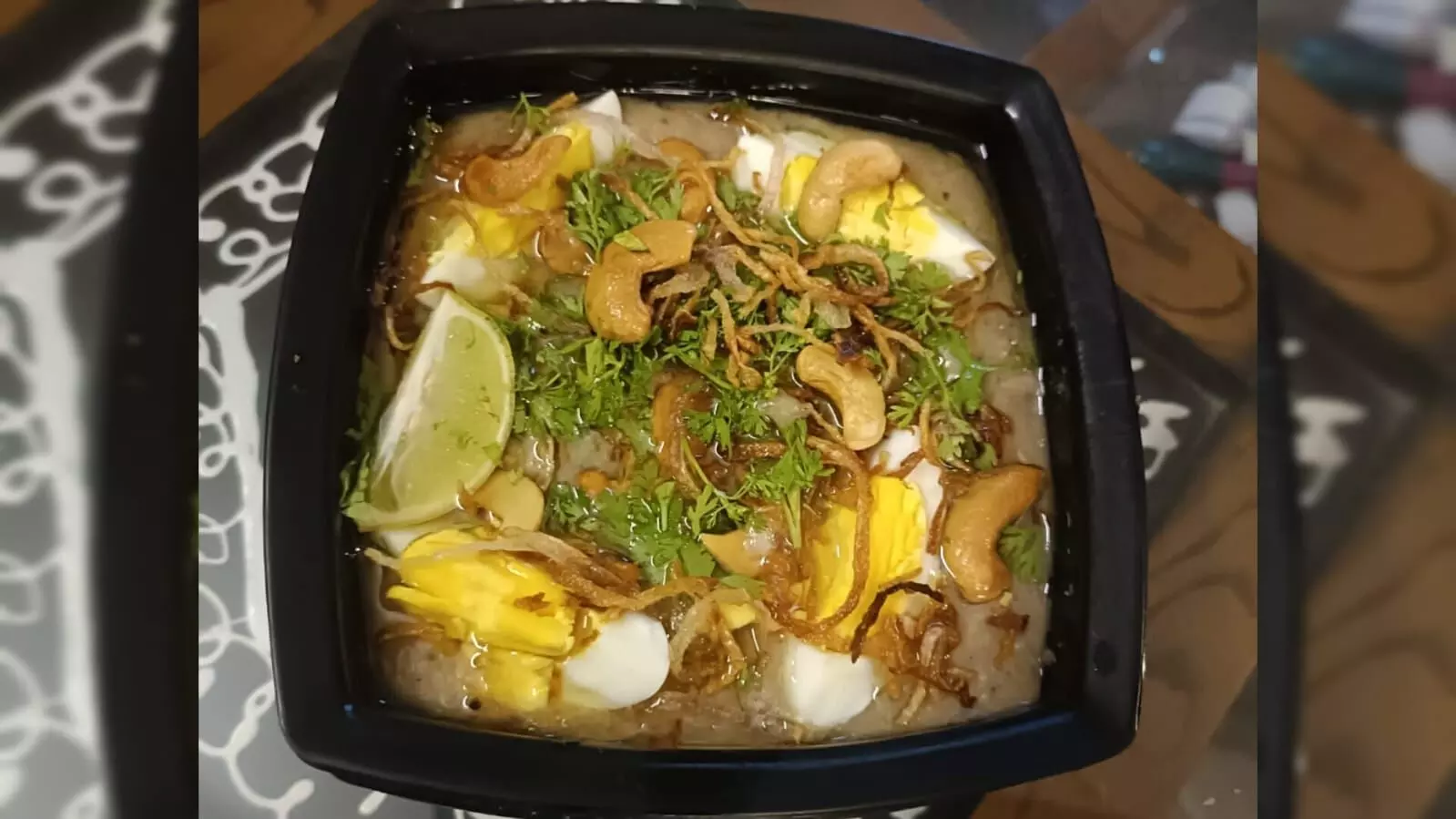Ramzan 2023: Making haleem at home was a community affair
A slow-cooked stew-like dish made of meat, lentils, and wheat and seasoned with a range of spices is one of the most famous Ramadan dishes

HYDERABAD: Ramadan, which began on March 23, 2023, is being observed by Muslims around the globe. During the celebration, they fast from dawn to dusk and feast at night.
So, during this time of year, Hyderabad offers a variety of delicacies such as Biryani, Haleem, and other cuisines. Haleem, a stew-like meal, is also a Ramadan delicacy in Hyderabad.
A slow-cooked stew-like dish made of meat, lentils, and wheat and seasoned with a range of spices is one of the most famous Ramadan dishes.
This is why renowned Hyderabadi eateries go to great lengths this season to provide the finest haleem to Haleem lovers. Popular eateries serving Mutton and Chicken Haleem during this season include Pista House, Shaghouse, Sarvi, Cafe 555, and Paradise. Many popular eateries were seen this season offering Baahubali haleem, customised haleem, and delectable toppings, enticing haleem fans to taste all of the city's renowned haleem.
Regardless of how well-known restaurants prepare various kinds of haleem, many Hyderabadis prefer home-made haleem and make it at home using their mothers' and grandmothers' secret recipes. Even though making haleem is not a simple task, many Hyderabadis enjoy doing it together at home given that it is a community affair.
Making haleem at home is challenging art to perform
Making Haleem at home is a challenging art to perfect because the quantity of meat ingredients and utensils is reduced, making recreation more difficult than with commercial or Shadi size haleem, according to Haseeb Jafferi, founder Sufi Trails.
"It's also difficult to balance spices because the quantities are smaller, and the hand grinder is the biggest challenge for them." Ghota texture and consistency are extremely difficult to achieve with a grinder, and your servant will leave the day she learns you are making Haleem for obvious reasons. Another battle that takes judgement is the precise use of correct meat and pressure cooker consistency," Haseeb Jafferi explained.
Pic Credits/ Haseeb Jafferi
"Then there's the enormous challenge of washing cutlery and cleaning up the kitchen," he adds, "which is usually an honest haleem. Another artistic aspect of Deccani cuisine is barista, or fried onions and eggs. In any case, you can use a pressure cooker and a grinder to partially pound the meat. Because the effort required is so great, the final result is always positive".
Making haleem at home was a community affair
"In the olden days, all the families were staying in joint families and nuclear families did not exist," Haseeb explains, recalling the days when families used to prepare the mighty dish at home. So we had a large house, large utensils and plenty of open space to cook haleem. Every home would have Ghota, a long log with a pendulum that could be used to crush the meat. When you use a grinder, the flavour is different, but when you do it by hand with a wooden log, the taste is different like the way it's done in restaurants. Previously, the families were large, with many cousins and siblings, and making haleem was a community affair."
When asked how haleem was prepared at home, he says, "The woman does the preparations, and men come and crush the meat at the end, and everybody has servants to help you around, but all of these things no longer exist." Depending on the number of the household, you now only have a grinder and a small wooden spatula to mix with."
Sharing Iftari to friends, neighbours wrapped in Tore Poosh was customary
When it comes to sending Iftari to friends and family, Jafferi adds, "Sending Iftari to your neighbours and friends was customary, and we still do this in many areas even today, not only to your Muslim neighbours but also to Hindus and Christians in your community. So when you offer iftari you send in a red cloth which is called 'Tore Poosh'. So you set up a tray and keep fruits, dahi-bade, haleem, and whatever you make at home and drape it with your silk or satin cloth with a golden or silver border and send this just before the siren."
Pic Credits/ Haseeb Jafferi
"The neighbours keep this, and the next day they reciprocate with their Iftari, which is why most Muslim families have full tables because of the dishes they make, as well as the dishes their neighbours send to them." This is a nice community gesture, and if you don't talk to your neighbors, you're sure going to speak to them when they share food, and food is always an ice breaker. "This is a rapidly fading tradition that is still practised in many areas, and I believe it must be preserved because it has enormous potential to build community relationships, and food is an ice-breaker for that," Haseeb Jafferi explains.
Pic Credits/ Haseeb Jafferi



